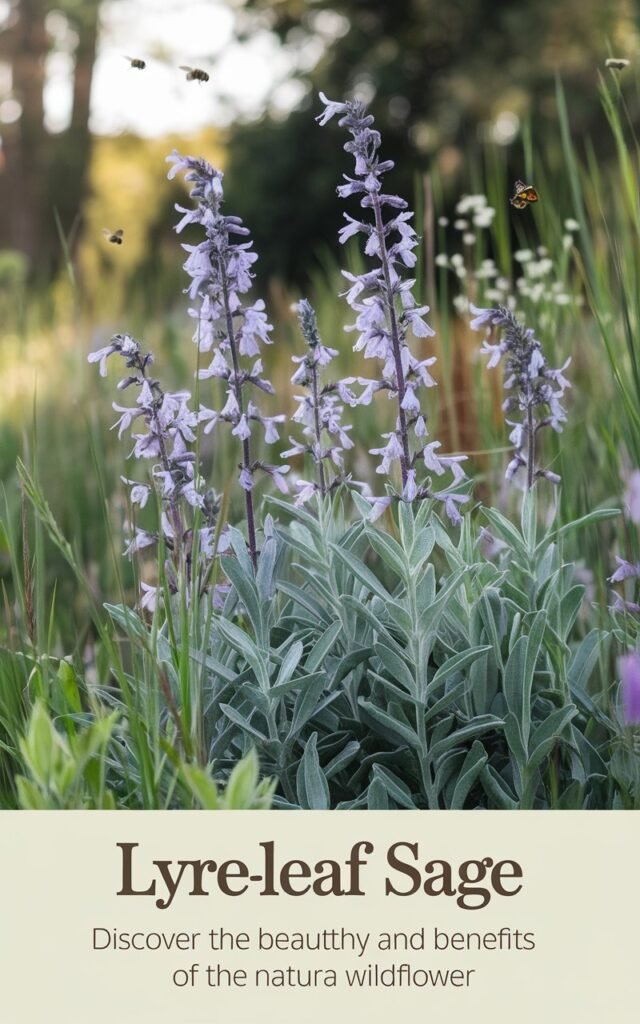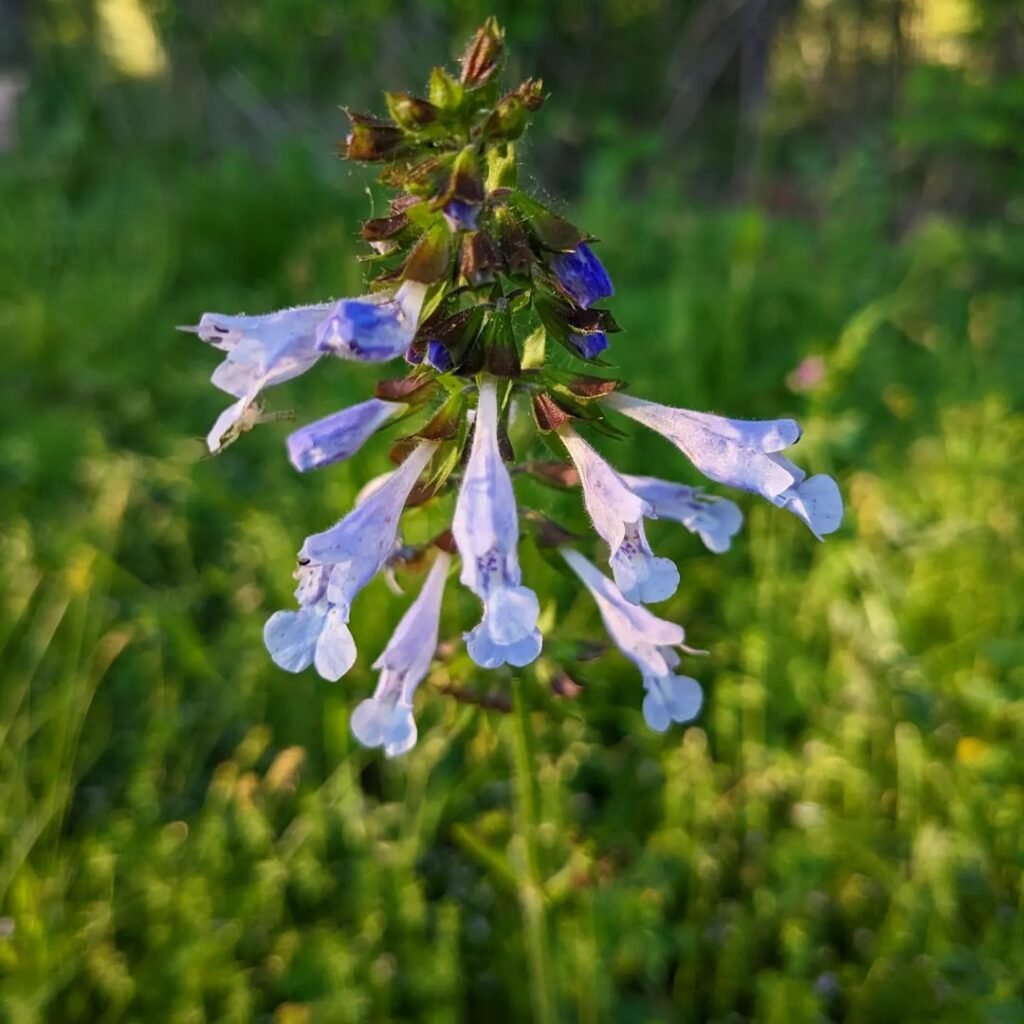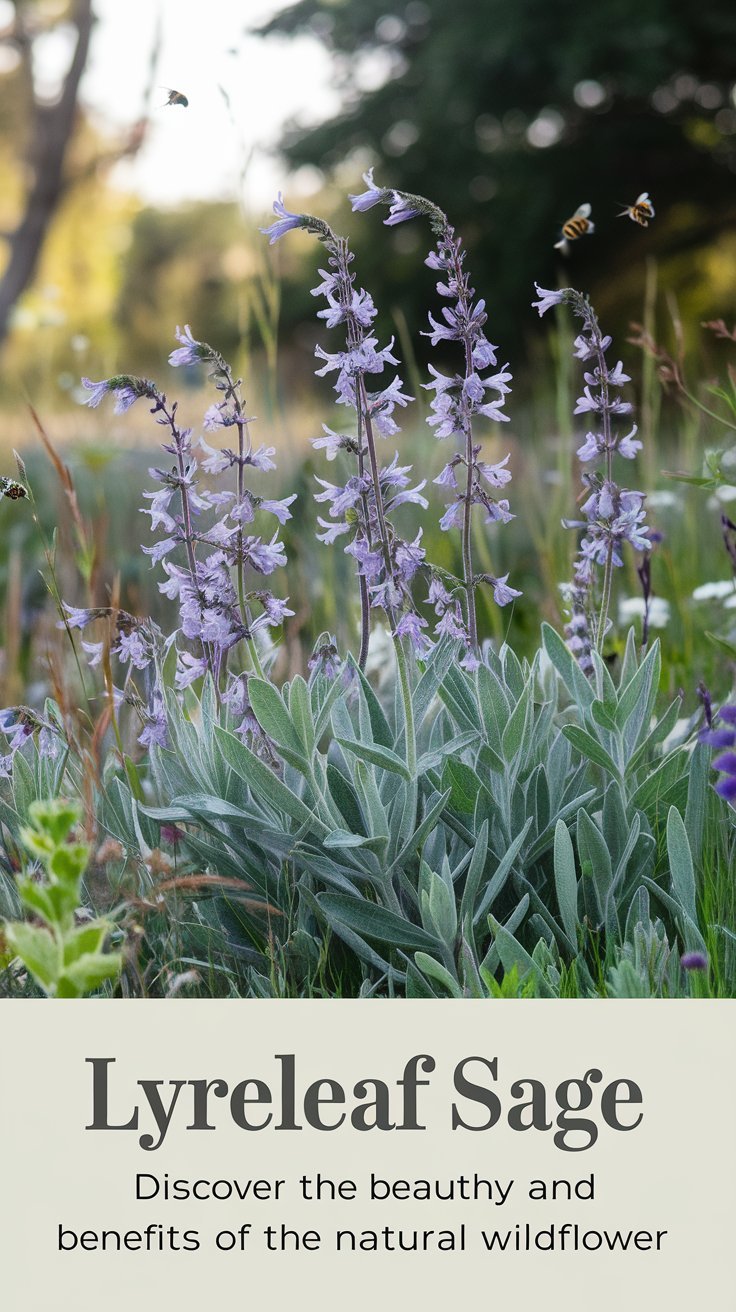Explore the enchanting world of lyreleaf sage in our comprehensive 2024 guide. Learn about its unique characteristics, ecological benefits and how to cultivate this native beauty in your garden. Perfect for wildflower enthusiasts and sustainable landscapers.
Lyreleaf sage (Salvia lyrata) is a captivating native wildflower that adds beauty to natural landscapes and gardens alike. With its distinctive foliage and delicate flowers, this versatile plant offers both aesthetic appeal and ecological benefits. This comprehensive guide explores the characteristics, cultivation and significance of lyreleaf sage in modern gardening and conservation efforts.
As a botanist specializing in North American native plants for over two decades, I’m excited to share my knowledge about this often-overlooked gem. Let’s dive into the world of lyreleaf sage and discover why it’s gaining popularity among gardeners and ecologists in 2024.
Understanding Lyreleaf Sage

Botanical Overview
Scientific Name: Salvia lyrata Family: Lamiaceae (Mint family) Native Range: Eastern United States
Lyreleaf sage is a perennial herb known for its basal rosette of lyre-shaped leaves and tall spikes of lavender-blue flowers.
2024 Update: Recent genetic studies are revealing greater diversity within the species, leading to increased interest in conservation efforts.
Pro Tip: Look for the distinctive purple veining on the leaves, which intensifies in cooler weather.
Key Characteristics
- Foliage: Lyre-shaped basal leaves, often with purple markings
- Flowers: Spikes of small, tubular flowers in shades of lavender to light blue
- Height: Typically 1-2 feet tall when in bloom
- Blooming Season: Spring to early summer
- Growth Habit: Forms a low, spreading groundcover when not in bloom
2024 Trend: Increased use in native plant gardens as awareness of pollinator decline grows.
Ecological Significance
Lyreleaf sage plays a vital role in its native ecosystems:
- Pollinator Support: Attracts bees, butterflies, and hummingbirds
- Wildlife Value: Seeds provide food for small birds
- Soil Stabilization: Spreading habit helps prevent erosion
- Biodiversity: Supports native insect populations
2024 Research Focus: Studies are exploring the potential of lyreleaf sage in urban heat island mitigation due to its cooling groundcover effect.
Cultivating Lyreleaf Sage

Ideal Growing Conditions
- Sun Exposure: Part shade to full sun
- Soil Type: Well-draining, slightly acidic to neutral
- Moisture: Tolerates both dry and moist conditions once established
- Hardiness Zones: USDA zones 5-9
2024 Innovation: New soil moisture sensors are helping gardeners optimize watering for native plants like lyreleaf sage.
Planting Guide
- When to Plant: Early spring or fall
- Spacing: 12-18 inches apart
- Depth: Plant at the same level as it was in the nursery container
- Watering: Keep soil consistently moist until established
Pro Tip: Interplant with other native species for a diverse, layered landscape.
Maintenance
Lyreleaf sage is relatively low-maintenance:
- Pruning: Remove spent flower stalks to encourage reblooming
- Dividing: Every 3-4 years to maintain vigor
- Mulching: Light mulch helps retain moisture and suppress weeds
- Pest Management: Generally pest-resistant; watch for slugs in damp conditions
2024 Trend: Minimal intervention gardening practices are gaining popularity, making low-maintenance natives like lyreleaf sage increasingly desirable.
Landscape Uses
Lyreleaf sage is versatile in the landscape:
- Groundcover: Excellent for naturalizing areas
- Woodland Gardens: Thrives in dappled shade
- Rock Gardens: Tolerates poor soil and dry conditions
- Rain Gardens: Adapts well to varying moisture levels
- Native Plant Gardens: Essential component of regional ecological plantings
2024 Design Trend: Integration of lyreleaf sage in modern naturalistic garden designs, blending aesthetics with ecology.
Propagation Methods
- Seed: Easily grown from seed; sow in fall or early spring
- Division: Divide established plants in spring or fall
- Cuttings: Root stem cuttings in summer
2024 Update: Community seed libraries are increasingly offering lyreleaf sage seeds to promote native plant cultivation.
Medicinal and Culinary Uses
While primarily valued for its ecological and ornamental qualities, lyreleaf sage has historical uses:
- Traditional Medicine: Used by Native Americans for various ailments
- Edibility: Young leaves can be used in salads (in moderation)
Note: Always consult experts before using any plant for medicinal or culinary purposes.
2024 Research: Ongoing studies are investigating the potential medicinal properties of lyreleaf sage compounds.
Conservation Status
Lyreleaf sage is not currently threatened, but conservation efforts are important:
- Habitat Preservation: Protecting native ecosystems where it grows
- Native Plant Promotion: Encouraging use in landscaping to support local ecology
- Seed Banking: Preserving genetic diversity for future restoration efforts
2024 Initiative: Native Plant Challenge programs are encouraging homeowners to incorporate species like lyreleaf sage into their landscapes.
Conclusion: Embracing Lyreleaf Sage in Modern Landscapes
Lyreleaf sage represents the perfect blend of beauty, resilience, and ecological value. By incorporating this native wildflower into our gardens and landscapes, we not only create visually appealing spaces but also contribute to the health of our local ecosystems.
As we move forward in 2024, the importance of native plants in our gardens cannot be overstated. Lyreleaf sage offers an accessible way for gardeners of all levels to participate in ecological gardening practices while enjoying the subtle beauty of this native gem.
Remember, gardening with native plants like lyreleaf sage is a journey of discovery and connection with your local environment. Embrace the learning process and enjoy the myriad benefits these plants bring to your outdoor spaces.
For more information on native plants and ecological gardening, visit resources like the Lady Bird Johnson Wildflower Center or your local native plant society. Happy gardening, and may your landscapes flourish with the beauty of lyreleaf sage!
For more gardening tips and plant care guides, visit usagardenhub.com




